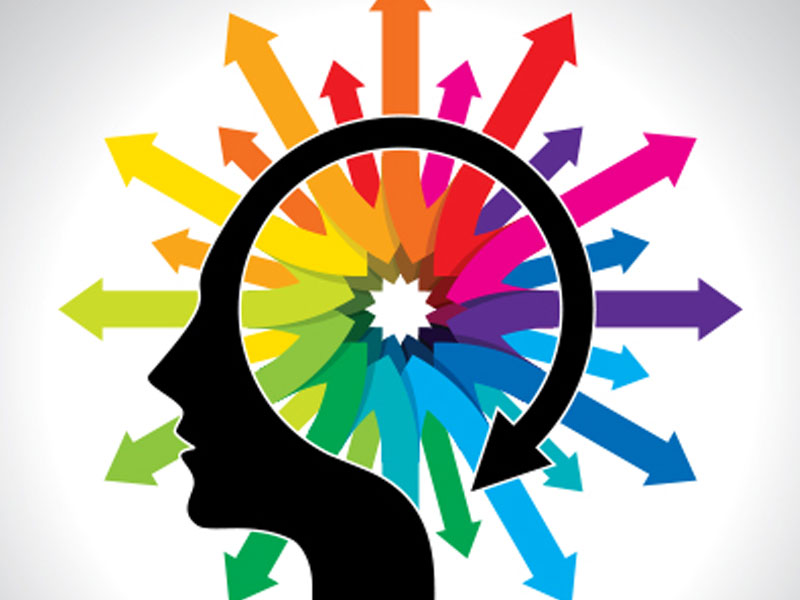
Have you ever experienced how a bright colour, maybe yellow or red, puts you in a good mood? Or, you feel a sense of calm or fullness when you look at a dull colour, such as violet or blue. Have you ever noticed, when sad, you prefer darker tones. Similarly, during a happy state, brighter colours attract you. These scenarios hint at a direct link between colours and mood. But does such a connection really exist? To get an answer to this question, Onlymyhealth spoke to Dr Jyoti Kapoor, who is a senior psychiatrist and founder of ‘Manasthali’. This is what she said:
Do Colours Have An Impact On Mood?
Dr Kapoor said that colours basically are electromagnetic waves in the visible spectrum and research carried out over the past few decades have shown how electromagnetic radiations interact with our own electromagnetic field and cause changes in us.

(Photo Credit: Freepik)
- Personal experiences also hint towards a connection between colours and our mood. We all have experienced how vibrant colours uplift our mood and darker colours cause a sense of fullness.
- Those in a dull state of mind generally perceive less colour and seem to prefer darkness and lack of colour.
- In fact, chromotherapy or colour therapy is based on the idea that colours can have a more long-lasting effect on us physically and psychologically.
- According to Ayurveda, colours have an impact based on a person’s ‘prakriti’ (nature), along with weather, season, and situation. Thus, the same colour can have different impacts on different people, as well as different impacts on the same person based on the situation. This is the reason why a particular colour can have both positive and negative impacts.
Also read: Pastel Palette 2020: What Pastel Colours Are Becoming A Cultural Obsession Again And How?
Effect Of Certain Colours On A Person’s Mood

(Photo Credit: Unsplash)
In psychology, the impact of colour on mood and emotions is well documented. “While the association of colours with feelings are also universal, their socio-cultural connections are different and often misunderstood,” said Dr Kapoor. She gave the example of the colour white. White is often associated with purity and innocence. But, its use varied across cultures. In the west, it is the colour of matrimony. On the other hand, in the east, it is associated with birth and death, “not because it’s colour of mourning as misunderstood by those unaware of eastern philosophical understanding but because the soul is considered pure and innocent and therefore holy,” the doctor said. If one doesn’t dig deep into cultural symbolism, then white brings peace and tranquility, some things that are universal.
Just like white, every colour impacts our mood and has a socio-cultural significance associated with them. Let us look at some of them one by one:
- Red: A hot colour, red is associated with strong emotions and can evoke excitement, love, passion, anger, and violence.
- Orange: A warm colour, orange is associated with moderate emotions and can evoke feelings of confidence, courage, and spirituality.
- Yellow: Again a warm colour, yellow is associated with being cheerful, happy, and hopeful.
- Green: It’s a cool colour and since we see it all around us as colour of nature, it gives a sense of freshness, harmony, and coolness. However, it is also associated with feelings of jealousy, envy, and greed, especially with darker tones.
- Blue: Again, a cool colour. We see blue all around us in the sky and water, and thus, it evokes feelings of space, freedom, and lack of restraint. It generally reduces tension, lowers pulse rate, and appetite. However, darker shades add the dimension of dullness and even sadness.
- Indigo: Since it is a combination of blue and violet, it is colder and can cause deeper relaxation and a sense of introversion. It can lead to a more introspective, meditative state and darker shades can cause a dull mood.
- Violet: This colour lies on the colder end of the spectrum. Violet slows the external awareness and causes further introversion. Hence, it is associated with spirituality and mysticism. However, too much of it can also lead to negative feelings of withdrawal and renunciation.
- Black: This colour is associated with night and coldness, and can evoke feelings of total withdrawal. Thus, it is associated with mourning, loss, and fear. But when linked to sleep, it causes relaxation.
Also read: Colour Therapy or Chromotherapy, Is This Complementary Therapy Worth Trying?
These are the primary colours and other colours are a combination of these, thus elicit mixed emotions. Lighter colours are associated with lighter emotions and darker tones feel heavier. Hence, psychologically, someone’s choice of colour in clothing and art reflects subconscious aspects of feelings and associations.
(With inputs from Dr Jyoti Kapoor, who is a senior psychiatrist and founder of ‘Manasthali’)
Photo Credit: True Value Paint)
Also watch this video
How we keep this article up to date:
We work with experts and keep a close eye on the latest in health and wellness. Whenever there is a new research or helpful information, we update our articles with accurate and useful advice.
Current Version